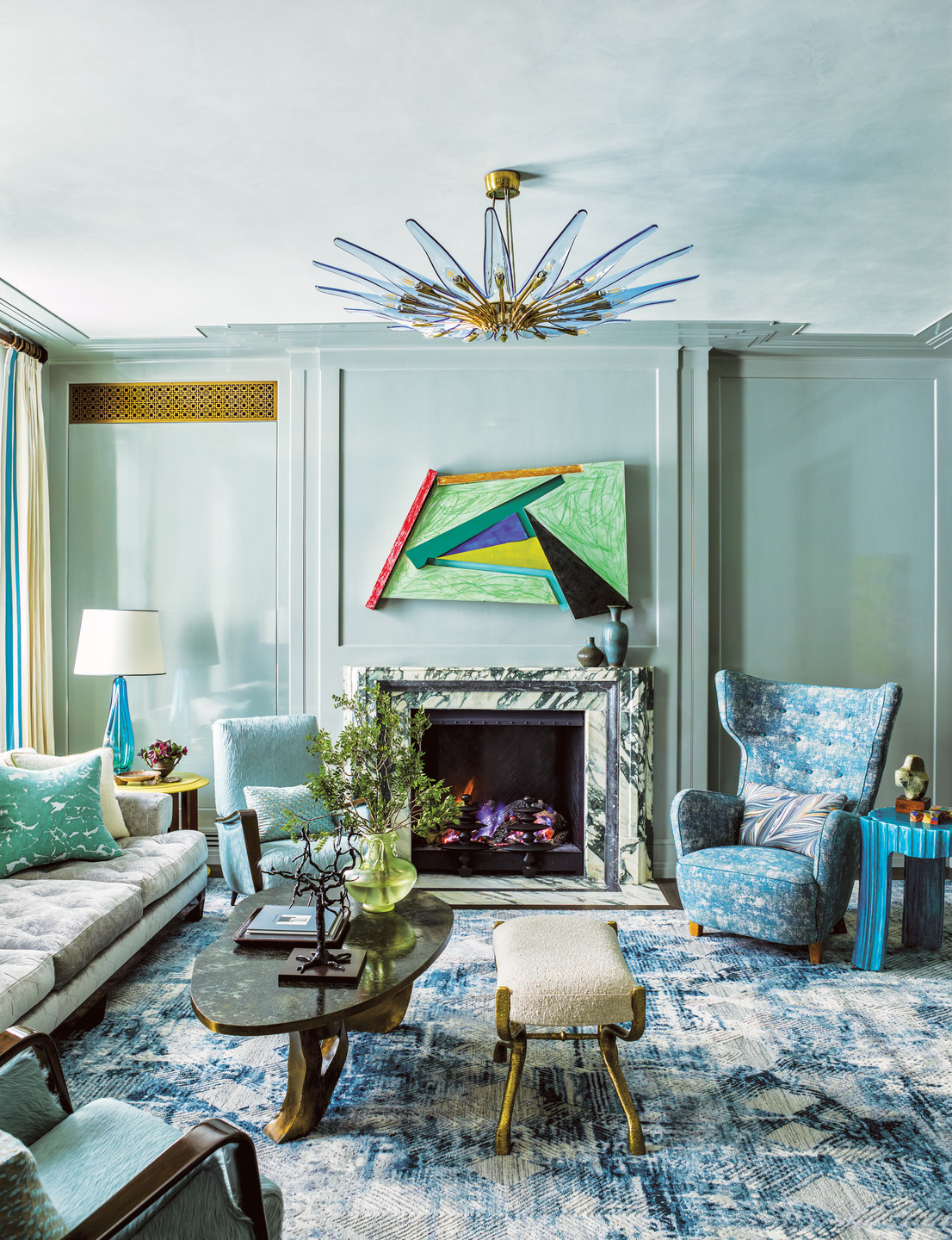Steven Gambrel Adds Swagger and Style to a London Townhouse
For the interior of a Holland Park home, the designer puts a bold spin on tradition with furniture and art that pack a punch

Steven Gambrel does not like to be idle. The New York interior designer prefers to operate in overdrive, conjuring complex, singular interiors for which almost every element, save for the antiques, is an artisanal creation born from his restlessly inventive mind. “If I weren’t so busy with really compelling stuff, I’d be hard on myself for not going home and painting,” admits Gambrel, who enjoys drawing sketches to illustrate his ideas. “But I feel really satiated.”
High-end residential commissions for clients who are just as infatuated with one-off perfection are his bread and butter. Several years ago, an American investor and his wife reached out to Gambrel to overhaul a neo-Georgian house they had purchased on Holland Park, in one of London’s ritziest neighborhoods. Despite the brick mansion’s stately street presence, there was a less compelling story inside: It was a warren of small rooms lacking interesting salvageable details.



As the property’s interior was not “listed”—Britishspeak for architecture that is deemed historically significant enough to be legally protected—the spaces could be thoroughly adapted for the couple and their three children. A besotted Anglophile with an archival fluency in British design, Gambrel is a master at whipping up frothy modern interpretations of classical elements. “They wanted my sensibility for ‘an American in London’ experience,” he recalls. “I could enjoy referencing 20th-century Georgian style without being beholden to it.”


The traditional brick façade is all that remains of the past. The five-story, six-bedroom, 6,000-square-foot residence now includes a new underground level and spacious, light-filled living areas, thanks in part to an expansion at the back of the building. Gambrel’s most dramatic intervention is a central serpentine staircase inspired by the cantilevered stone steps at Castletown House, an 18th-century Irish landmark. Gambrel’s modern version is fashioned from gray Fior di Bosco marble and accessorized with custom antique brass spindles and an ebonized-walnut handrail, all twisting gracefully beneath an elegant laylight handcrafted in bronze. “I was looking for a statement element but also something that would tie all of the floors together and bring light through the house. I’m obsessed with these Georgian stairs made out of stone. It’s an art form in England.”
Why put the house in the hands of an expert and not let him go for it? Besides, color makes you happy”
While the designer is certainly capable of creating breathtaking spaces rendered in serene neutrals (the couple’s silvery gray bedroom, for instance), Gambrel is at his most expressive when deploying layers of eye-catching colors and razzle-dazzle materials. He chose a painterly Calacatta Vagli Rosato marble in deep claret hues to rev up the kitchen’s backsplash and island and paired stained charred larch trim with embossed silver-gilt leather panels for an urbane take on a traditional study. In the dining room, a ceiling painted in high-gloss apricot accentuates the pink leather seats of Maison Leleu chairs and the red legs of an octagonal eggshell-top table of Gambrel’s design.


“I wanted the contrast of cool tones and warm tones—silvers and blues at the front of the house and warmer colors as you go deeper inside,” explains Gambrel, who outfitted the spaces throughout with a snappy combination of distinctive vintage and bespoke furnishings. The living room’s electric mix, in a symphony of turquoise blues, features 1950s Italian club chairs in hair-on-hide upholstery, a jewellike Philip and Kelvin LaVerne cocktail table from the ’70s, vintage Murano glass lamps, and a radiant midcentury chandelier by Max Ingrand for FontanaArte.

His clients were all in on such bold interiors. “I always thought white and beige were very easy to do if you are decorating by yourself,” observes the wife. “Why put the house in the hands of an expert and not let him go for it? Besides, color makes you happy.”

That uplifting attitude is just as evident in the couple’s approach to collecting art. Over the past two decades they have amassed a trove of spirited contemporary works, including paintings by Amy Sillman, Frank Stella, Harold Ancart, and Sarah Crowner, as well as more than 35 photographs by Alex Prager, whom they discovered early in the artist’s career. They recently acquired a striking multihued mirror installation by Olafur Eliasson that hangs in the foyer.


While the Eliasson work was purchased specifically for its setting, the couple abides by a rule to never think about where art will hang when buying it. “We want to consider the work for what it is, not the practical nature of it,” says the wife. It’s a rule that seems especially relevant today, given that they unexpectedly sold the house this past spring, when the husband’s career prompted a move to New York.


For his part, Gambrel notes that he never designs a space around a work of art, and this house was no exception. “A room has to have its own personality to allow the art to speak without taking over,” he says. “I want the art to be a part of the room so it doesn’t feel like it’s hung in a gallery. I’m always looking for balance.”
A version of this article first appeared in print in our 2025 Fall Issue under the headline “Dramatic Turn.” Subscribe to the magazine.